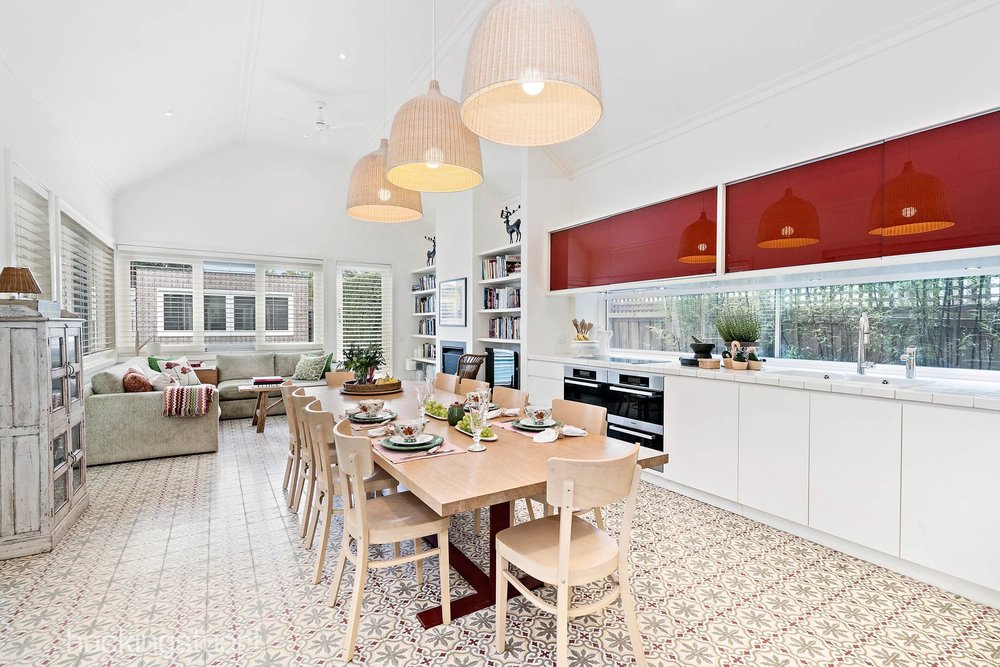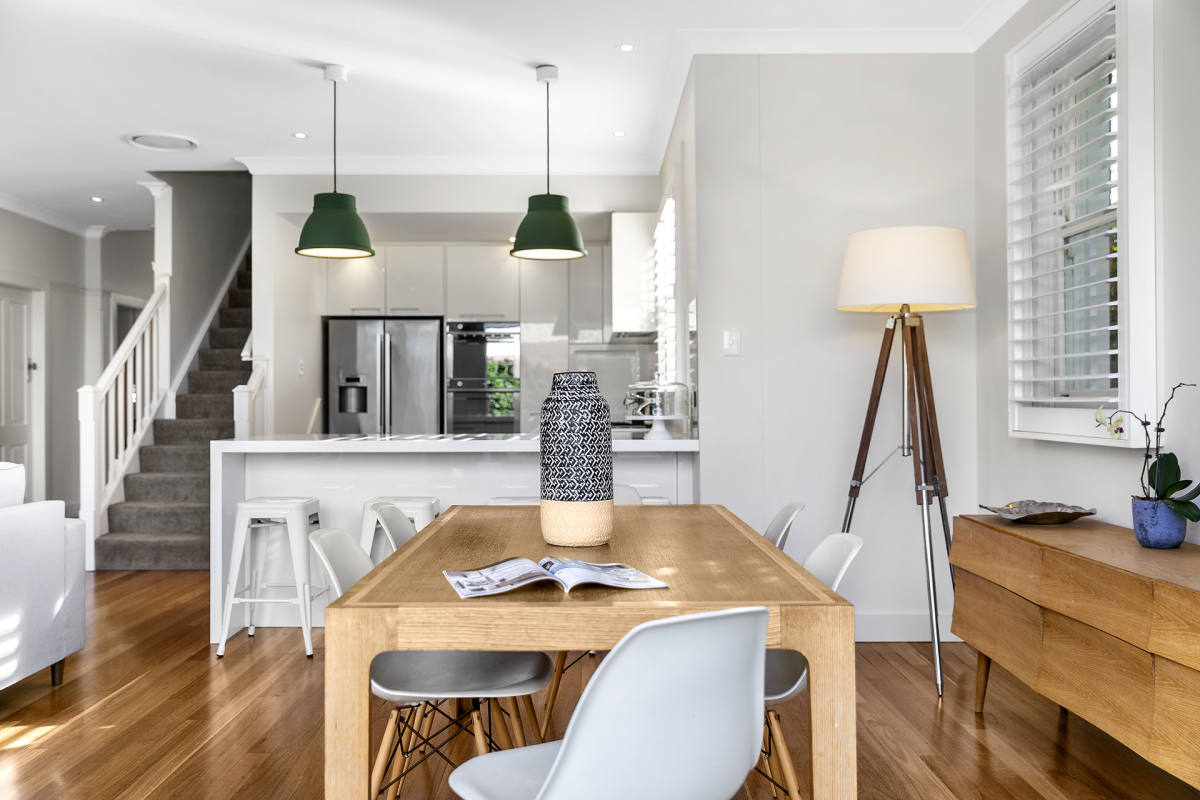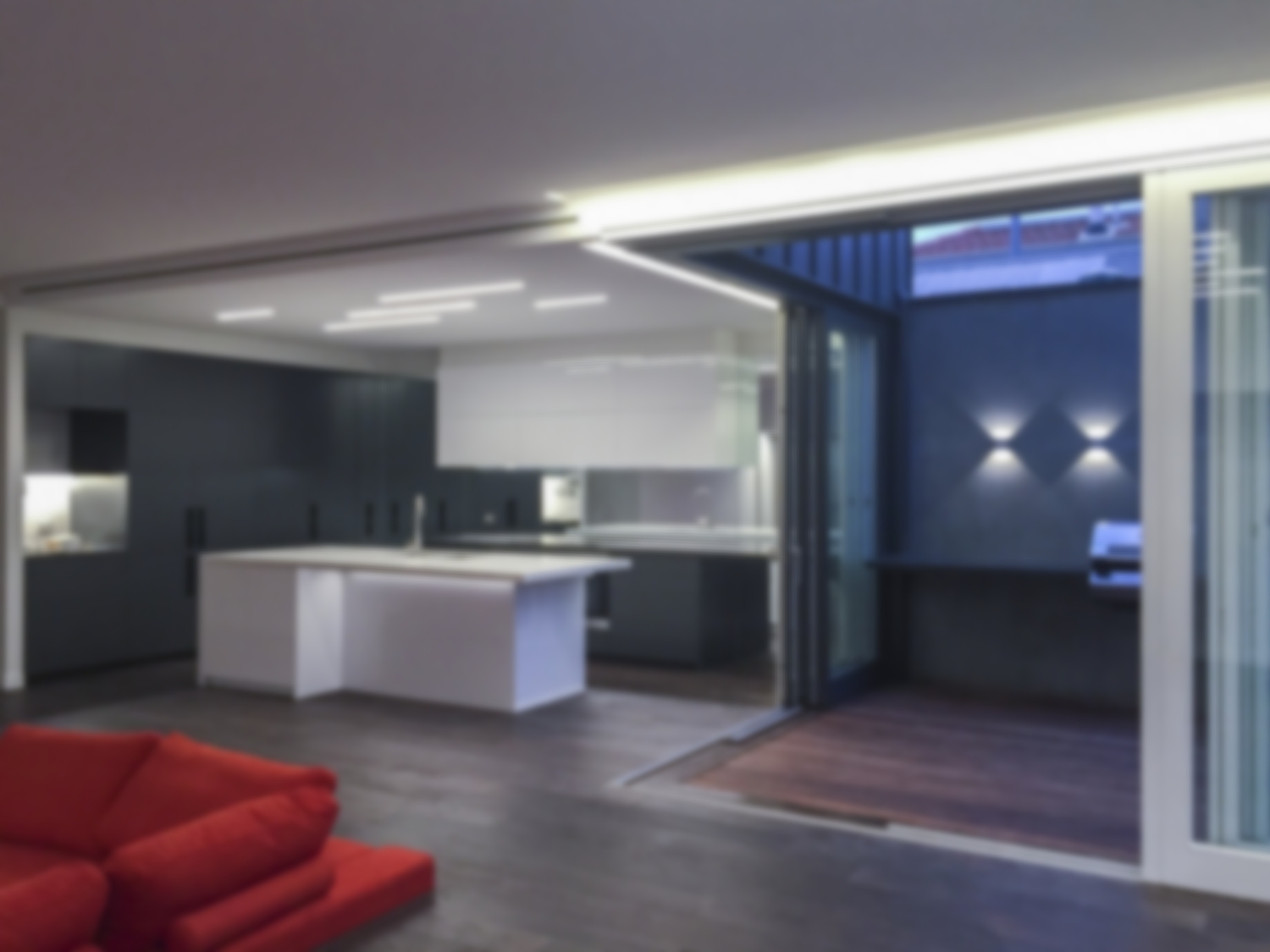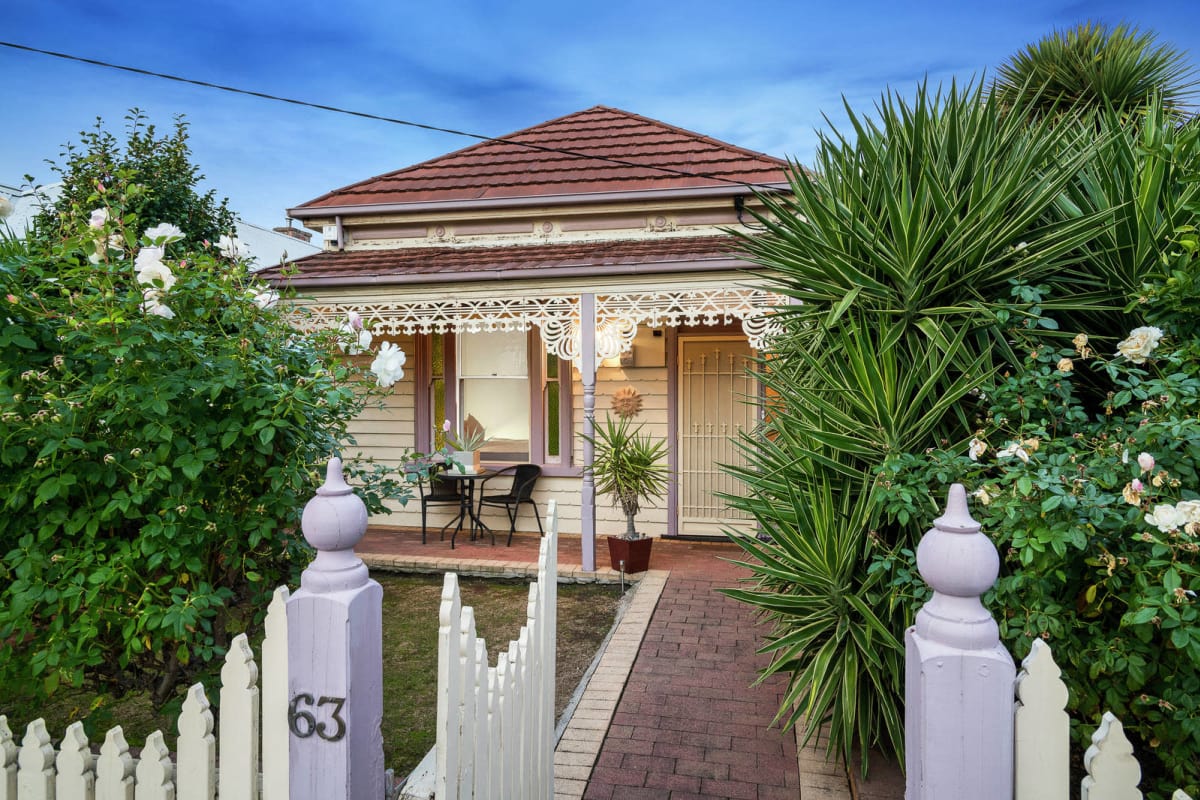Most homes have a few dark rooms and nooks, but you don’t have to continue living in Stygian gloom. To illuminate a poorly lit home without flicking a single light switch, use a combination of these bright ideas.
Topics in this article:
Choose glass-panelled doors
One of the most effective ways to let natural light flood into your home is to use glass-panelled doors. Installing a window or increasing its size usually requires approval from your local council, but this is rarely the case when replacing external doors. Whether you like the bold lines, or prefer traditional French doors, there is a design to suit every palette and position, both inside and out.
Tip: If privacy is a concern, opt for a frosted-glass effect.
Adopt glass splashbacks
Can’t afford to lose valuable cupboard space by replacing your wall-mounted kitchen cabinets with a window? Try using a window for your splashback instead as Rudolfsson Alliker Associates Architects has done in this Five Dock residence in Sydney. Natural light will illuminate your bench space and provide important task lighting for cooking. Window splashbacks are possible when your kitchen butts up against an external wall. If yours runs along an internal wall, try using a mirrored splashback instead.
Select white satin paints
If you’ve asked anyone how to brighten up a dark home, chances are you’ve already been told to paint your walls white and banish dark furnishings. While this is the first trick in the book, the glossier the paint is, the better it will diffuse light throughout your home. So, opt for a satin finish on walls and use gloss or semi-gloss paint for trimmings.
Just note that paints with a medium to high sheen highlight every inconsistency, so make sure you plaster, sand and prime surfaces well before painting – or call in a professional.
Tip: Reflective tiles and metallic wallpaper have a similar effect.
Embrace glossy floors
We rarely consider treating our floors to lighten a room, though high-gloss floors are brilliant at bouncing light around. It may be as straightforward as sanding back your floorboards and polishing them with a glossy finish, or you may prefer to employ a more drastic treatment and use high-sheen white floor paint or epoxy, as used in this industrial Montreal penthouse.
Install a tubular daylighting device
These ingenious inventions go by many names – tubular daylighting devices (TDDs), light tubes, sun tunnels, tubular skylights. Most capture sunlight through a small dome on your roof and funnel it down a reflective tube and through a skylight-like opening in your ceiling, which diffuses light throughout the room.
TDDs amplify natural light, do not cause homes to heat up and some are capable of capturing solar energy to light rooms at night. Most TDDs can even be installed in rooms with no direct roof access, using angled reflective tubing to channel light into hard-to-reach spaces.
Related reading: How to Borrow Light for Dark Areas of Your House
Create an atrium
The sheer elegance of atriums is enough of a reason to try to incorporate one into any design, which this Sydney home by Decus Interiors attests to. This custom-designed circular skylight channels sunlight down to the ground-level kitchen, while natural light pours into the upstairs rooms via internal windows that look onto the void. One of the best features about a large circular skylight is the exquisite light play and shadows that transverse your interior over the course of a day.
Gable skylights such as the ones in this Sydney home by Christopher Polly Architect can be cleverly angled (north, in most southern hemisphere homes) to suit the aspect of your site.
Many skylights and roof windows now use self-cleaning glass. This usually has a specially formulated external coating that reacts with ultraviolet sunlight to break down leaves and debris that fall on the glass, while rain finishes off the job and washes the panes clean.
Tip: Skylights can trap heat inside homes, so increase your ventilation to counter this.
Consider external glass walls
For sites where privacy is not an issue, using floor-to-ceiling windows instead of walls will instantly flood your interiors with light. Opt for double glazing (at least) for insulation, and try to position your wall-to-wall windows facing north. Excessive glazing on the westerly and even easterly sides of your home often lets harsh, hot rays inside and can overheat your house.
If you would like to install floor-to-ceiling windows but are concerned this may sacrifice your privacy, there are many inventive screening options that may still make it possible to enjoy external glass walls and some seclusion too.
Stylish Ways to Boost the Privacy of Your Home
Swap walls for room dividers
Sometimes there is no alternative to walls for structural or screening reasons. However, if you only want to delineate a space rather than divide it and create a solid barrier for privacy, consider using a room divider instead. Room dividers come in countless creative forms, from glass blocks to laser-cut screens, so the only limits are your imagination and site restrictions.
Carve out an internal courtyard
Do you have the budget for renovations and some space to sacrifice? A central courtyard could naturally light your home from within, which is the case with this home in Sydney’s Alexandria, by Elaine Richardson Architect. These tranquil indoor-outdoor spaces are best surrounded by windows, glazed louvres or glass sliding doors to let the light shine from the courtyard into adjacent rooms.
Consult an architect, interior designer or a builder for advice on how to maximise light penetration in your site, and remember, even a small internal courtyard can make a big difference.
Mirror, mirror on the wall
We’ve all heard that mirrors can transform any space from gloomy to glamorous, but there are a few tricks. First, bigger is always better when using mirrors – the larger the reflective surface, the more light it will bounce around the room.
And second, your mirror needs to reflect a light source, so place it opposite or adjacent to a window as has been done with the oversized circular mirror in this San Francisco home. Hanging a mirror behind a lamp can brighten a room even further.
Install illuminated LED mirrors
Illuminated mirrors are like their regular relatives but on steroids. Thanks to LED technology, these clever inventions mirror your reflection and simultaneously light up the room.
Many models are equipped with motion sensors that allow you to switch them on and off, handsfree. As a bonus, the LED lighting consumes less power than many traditional light sources.
For more tips to get the lighting in your home spot on take a look at our kitchen lighting guide and five fibs about LED lighting.
This article was originally published on Houzz.com.au. Read the original article here.
Written by:
Julia Fairley is a Houzz Australia Contributor. She loves thoughtful design and has recently become an accidental gardener, to everyone’s surprise. Julia studied Interior Architecture before graduating with a Bachelor of Arts at UNSW and working as a journalist.











